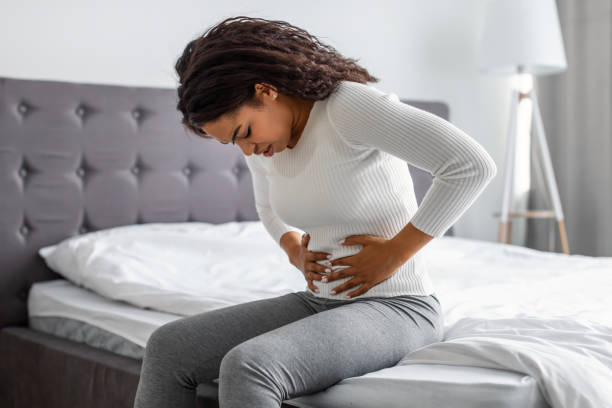
Period vs Pregnancy Symptoms: How to Tell the Difference Between PMS and Early Pregnancy Signs
Time to read 5 min
Time to read 5 min
Are you feeling tired and a bit crampy while your menstrual period is due? So, you must be wondering whether these symptoms indicate the arrival of periods or early pregnancy. A lot of women find the symptoms of early pregnancy and PMS (premenstrual syndrome) quite similar, which can be confusing and worrisome. The symptoms of PMS and early pregnancy are very similar, so many women find it difficult to distinguish between the two situations. However, early pregnancy and PMS also have specific signs and symptoms that can help you distinguish whether your periods are coming or you are pregnant.
Women need to understand the difference between the symptoms of PMS and early pregnancy. It is crucial to understand whether your periods are coming or you have conceived to take the necessary steps concerning your reproductive health and overall well-being. Both conditions cause some similar kinds of symptoms, such as mood swings, cramps, and fatigue. However, some major differences can help you recognise your particular cause of symptoms, and women should be aware of that.
This article is all about how women can discern the causes of their physical symptoms and differentiate between PMS and early pregnancy, allowing them to get the right medical advice if required.
Check out the table mentioned below to get a clear picture of the differences between the PMS symptoms and pregnancy symptoms.
SYMPTOMS |
PMS (PREMENSTRUAL SYNDROME) |
PREGNANCY |
|
Missed period |
No |
Yes (major indicator) |
|
Breast tenderness |
May be |
Strong and prolonged |
|
Mood swings |
Yes, very common |
Yes, more emotional mood swings, due to hormonal factors |
|
Fatigue |
May be mild fatigue and tiredness |
Severe and persistent fatigue |
|
Nausea and vomiting |
Uncommon |
Commonly occurs accompanied by morning sickness |
|
Frequent urination |
Uncommon |
Less common |
|
Spotting or bleeding |
Menstrual bleeding |
Implantation bleeding may be there (light and for a short duration) |
|
Food cravings |
May be |
More common and more noticeable |
|
Other significant symptoms |
Joint pain and acne |
Strong sensitivity to smell, |
Early pregnancy and premenstrual syndrome symptoms may appear the same, making it difficult to distinguish between the two conditions. Here’s the detailed symptom-wise breakdown that will help you distinguish easily.
Both premenstrual syndrome and early pregnancy involve swollen breasts, more sensitivity, and tenderness in the breasts. Pregnancy symptoms involve significant changes in nipples, such as darkened areolas, and the breast tenderness is more intense and more sensitive to touch.
Both PMS and early pregnancy symptoms may involve cramping that feels almost the same. However, PMS involves stronger cramps and mood changes, while pregnancy cramps are mild and last for shorter periods. Bloating is more common in PMS.
Premenstrual syndrome rarely involves nausea and morning sickness; however, it's more common during early pregnancy. The most common symptom of early pregnancy is nausea accompanied by vomiting and morning sickness.
Fatigue can be experienced during both PMS and early pregnancy. Fatigue and tiredness experienced during early pregnancy are extreme and more persistent. PMS may involve feeling tired, accompanied by trouble sleeping.
Mood swings due to hormonal fluctuations are common in both situations. There is a very subtle variation in emotional intensity. General mood swings are common during early pregnancy. PMS may involve irritability, anxiety, reduced sexual desire, and clumsiness.
Cravings are common in both PMS and early pregnancy, signs of period vs pregnancy. PMS involves cravings for sugars and salty stuff, accompanied by appetite changes, while pregnancy involves strange cravings for certain foods, accompanied by intense food aversions.
Mild bleeding or spotting is common right before your periods arrive, while early pregnancy may involve brown or light pink colored spotting called implantation bleeding.
The timing of the symptoms plays a crucial role in differentiating premenstrual syndrome and early pregnancy. At what time of the cycle you are experiencing symptoms matters in distinguishing between the two situations. Usually, implantations start to happen around 6-12 days after ovulation, while PMS begins 1-2 weeks before your periods arrive.
The premenstrual symptoms are usually noticeable 1-2 weeks before your periods start and subside as menstruation begins. These symptoms are temporary and relieved once the periods begin. Major PMS symptoms are bloating, mood swings due to hormonal changes, breast tenderness, fatigue, and mild cramping.
Pregnancy symptoms are noticeable around the implantation phase, that is, around one week before the missed period, or may be earlier in some cases. Symptoms continue and usually intensify across the first trimester of pregnancy. Common signs of early pregnancy include missed periods, tenderness in the breasts, nipple changes, nausea and vomiting, fatigue, increased urination, and increased cravings for certain foods.
If you have missed your period and are experiencing the symptoms of early pregnancy, you can take a pregnancy test. The ideal timing to get a pregnancy test is one week after you miss your period. Early tests may or may not be accurate, such as if you take it after 3-4 days of a missed period. If the pregnancy test result is negative, it is advised to take the test again in a week. If you are still concerned about the symptoms you are experiencing or the symptoms are bothersome, seek professional advice from a healthcare provider and consult a gynaecologist for a correct diagnosis and the right guidance.
Women need to be aware of the differences between the symptoms of early pregnancy and premenstrual syndrome. When you know how to distinguish between pregnancy and PMS symptoms, you can make the right decisions about your reproductive health. Women should carefully track their periods, signs, and symptoms, and listen to their body as it allow them to differentiate between the signs of early pregnancy and premenstrual syndrome. If you are experiencing these kinds of symptoms and are not sure whether these are associated with early pregnancy or PMS, it's better to seek help from a medical professional or gynecologist to get the right advice.
Undeniably, breast tenderness is among the earliest signs of conceiving. Breast pain and nipple changes may appear in the initial 2 weeks after you conceive. Breast tenderness may begin even before you notice that you have missed your period.
You may experience the signs and symptoms of early pregnancy before you actually miss your period. Some females may experience breast tenderness, nausea, fatigue, and light spotting in the initial 2 weeks after conceiving. However, these signs may be associated with premenstrual syndrome, so it's better to take a pregnancy test.
You may get signs of pregnancy in the early stages as early as 1-2 weeks after you conceive; however, the exact timing of experiencing symptoms may vary depending on various factors.
***Medical Disclaimer - The following information is for educational purposes only. No information provided on this website, including text, graphics, and images, is intended as a substitute for professional medical advice. Please consult with your doctor about specific medical advice about your condition(s).
